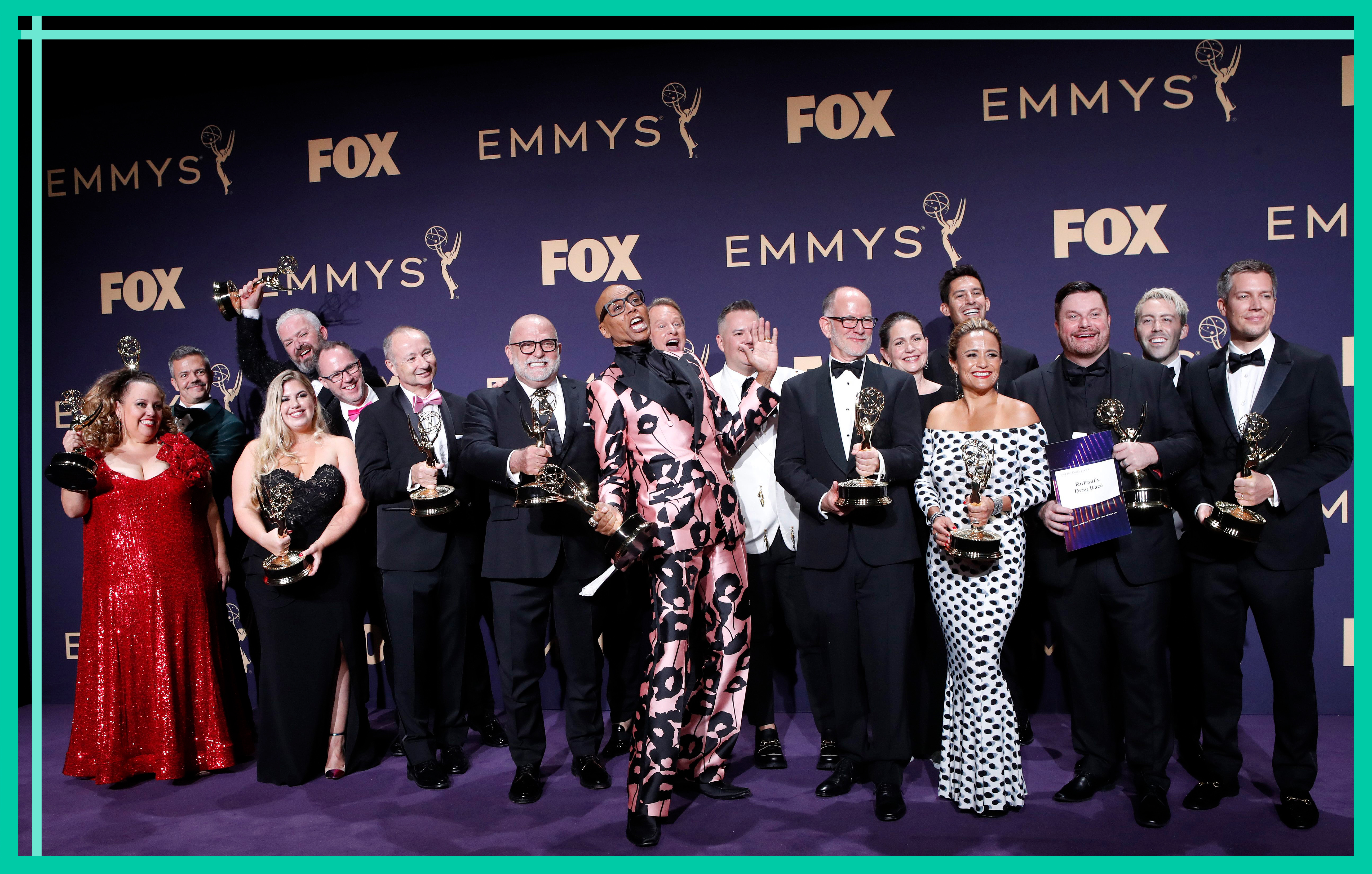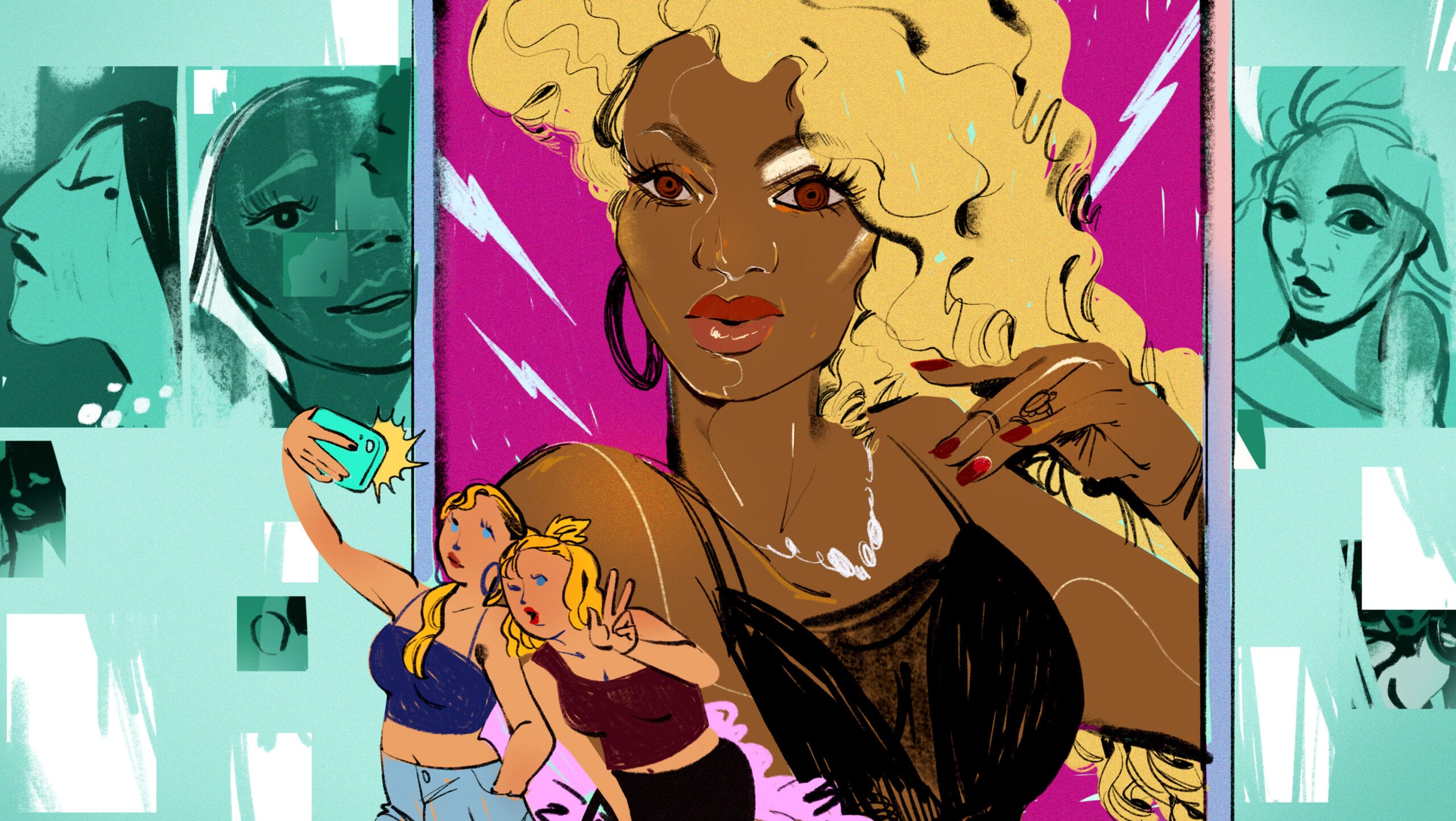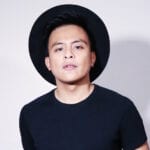I was in the closet when RuPaul’s Drag Race premiered on television.
It was 2009, and whenever I caught a glimpse of the show—the low-budget, glittery and blurry first season—I would switch the channel as fast as I could. I thought I’d be doomed if someone found out I was watching a show that was unabashedly gay—nevermind the fact that during that same period I read homoerotic romance novels and binge-watched America’s Next Top Model. Somehow, my teenage mind thought getting busted watching a show filled with sequins and drag queens was worse than openly smizing.
Years later, in 2014, while folding sweaters at my retail job, my manager asked me if I watched RuPaul’s Drag Race. “No,” I answered. “You should check it out, I think you’ll like it,” she said. That same week, I tuned in to RuPaul’s Drag Race Season 6 and fell in love with the art of drag and the heart of the performers. The show gave me the feeling of finally seeing myself in North American media—and it led me to actively revisit and seek out other queer content, like the documentaries Paris is Burning and How to Survive a Plague. I told my friends—gay and straight—to watch Drag Race, too. Soon it became a communal thing: We would head out to bars in Vancouver’s gay village to watch Drag Race screenings together. We’d do this weekly until I moved to Ottawa for graduate school.
But the community that Drag Race created followed me to the other side of the country. During my last year of studies in 2017, my roommate and I entertained each other during Ottawa’s ruthless winter by putting on face masks, drinking cheap red wine and watching RuPaul’s Drag Race. We distracted each other from homesickness and the impending pressure of defending our final project by dancing, prancing and pretending to death drop to Whitney Houston’s “I Wanna Dance With Somebody.” It allowed us to escape to another world, one with drag queens and special lingos, a world made accessible by RuPaul Charles, a Black gay man and one of the first drag queens to achieve mainstream fame with his 1992 dance club hit “Supermodel.” I could summarize the last semester of graduate school in three things: wine, thesis and lipsync.
At that moment, I looked back to my younger self and the missed opportunity of embracing the show when I was still a teenager. Maybe if I’d watched it back in 2009, I would’ve reconciled the gaps in my identity sooner. Maybe I would have ventured earlier into a world where being different was celebrated. By that logic, perhaps, I would have embraced my true self sooner, too.

In 2014, when I finally indulged in everything Drag Race, I also revered everything that RuPaul Charles embodied—the unapologetic, Black gay man unafraid to flaunt himself to the world, an icon who reminded queens and viewers alike that if they didn’t love themselves, then how in the hell would they be able to love somebody else? Drag Race was one of the first times I’d seen myself being represented on TV, in a media landscape that already lacks accurate and positive representations of LGBTQ2 people. As a gay Asian man, seeing a Black drag queen teach other queer people to love themselves was, at the time, the representation I needed.
As the years have progressed, and the show has gained success on a mainstream television network, Drag Race has toned itself down the exact opposite of drag’s history and intention. Where early seasons of the show were full of sexual innuendos, they are now minimized and replaced by narratives of self-love and empowerment—themes that appeal more to the show’s wider demographic. Charles, who used to excitedly talk about the politics of being a Black gay man in interviews, seems to have abandoned this for vague comments on LGBTQ2 acceptance.
It seems that Charles has become less of an advocate for Black and brown queens, historically marginalized people, and became more of a champion for gay male representation for a largely white and increasingly straight audience. The Mama Ru I loved on the show turned out, like most mothers, to be flawed.
Charles has, for example, made bizarre comments about the gender identity of contestants in a 2018 interview with The Guardian, when he said that drag is a political statement because it’s an act where men dress up as women. He added that drag “loses its sense of danger and its sense of irony once it’s not men doing it, because at its core it’s a social statement and a big f-you to male-dominated culture.” Days after the article was published, Charles tweeted, “You can take performance enhancing drugs and still be an athlete, just not in the Olympics.” His Guardian interview and tweet were perceived as transphobic, which resulted in public backlash, including from Drag Race alumni.
“The Mama Ru I loved on the show turned out, like most mothers, to be flawed.”
That same year, in a conversation with Johnny McGovern and Lady Red Couture on Hey Qween, Season 7 contestant Pearl recounted telling RuPaul how much it meant to be on the show. “She turned to me and said, ‘Nothing you say matters unless that camera is rolling,’” Pearl said, admitting it was one of the reasons she seemed disconnected on the show. “It was so heartbreaking because I idolized her, I worshipped her, and I felt like it was so disrespectful… so Hollywood, rotted and gross. How could you say that to someone who’s just, like, obsessed with you?”
Charles’ treatment of Black queens has also been troubling at times: Consider the way he treated The Vixen during the Season 10 reunion show, when The Vixen pointed out that white queens on that season, like Eureka, got a pass when they committed racist acts, including toward her, while she was painted as an aggressor. “Everyone is telling me how to react rather than telling them how to act,” she said. She ended up leaving the reunion show and Charles told the remaining queens: “People who find themselves in situations similar to The Vixen’s need to be accountable for themselves.”

RuPaul Charles with the mostly white crew of ‘RuPaul's Drag Race’ at the 2019 Emmy Awards. Credit: Nina Prommer/EPA, Francesca Roh/Xtra
Charles has responded simplistically to questions about racial representation on the show by pointing back to himself. At the Emmys last month, Essence’s Danielle Young asked Charles about the lack of diversity on Drag Race’s crew: “I’m curious about how you feel, especially as someone who represents so strongly for the LGBT+ community… Do you feel like it’s important for that to be represented behind the scenes as well?”
Charles, who was standing in front of a mostly white crew, responded with: “And the BLT community, I love myself from bacon, lettuce, tomato. First of all, the host of our show is Black, gay and a drag queen, so check, check and check,” he said as he ticked imaginary boxes of diversity. “But we’re pretty diverse, there are lots of different types of people here. But is it important? Absolutely. When I grew up, I had to fight, like… I feel like I’m about to quote a movie right now… but it wasn’t easy. ‘You know what I had to do? Some of the things, I’m not even going to repeat what I had to do!’”
What bothered me about RuPaul’s response.
1. When I said he reps the LGBT community, he said also the BLT community.
2. He thinks bc he is Black, gay & a drag queen, that somehow is diversity quota is met.
3. He couldn’t quote The Color Purple.
4. Look at the “diversity.” pic.twitter.com/Kks07oYDsE
— Danielle Young (@RhapsoDani) September 23, 2019
Some fans of the show exhibit a similar nonchalance about diversity and stubbornness when it comes to criticism about how the show treats and represents contestants of colour on- and off-camera. In 2018, some non-white queens revealed they were targeted, being bullied and receiving death threats. In a roundtable discussion, Season 9 contestant Shea Coulée said: “Queens of colour are less celebrated than our white counterparts. But that’s life, we have to work twice as hard to get half the recognition.”
This is reflected in a post–Drag Race comparison of the number of social media followers across alumni where non-white contestants appeared to have relatively lower follower counts than their white counterparts.

In the decade since it launched, Drag Race has transformed from a scrappy niche series followed primarily by queers into an Emmy-winning phenomenon watched by hundreds of thousands of people and a massive brand with spin-off programs, international franchises and world tours. It also turned unknown drag queens into brands themselves. In some cases, queens who compete on the show have earned roles in blockbuster movies, meet-ups with politicians and Las Vegas residencies. Though flawed, the show has provided an opportunity and a platform for a group that is often disenfranchised by homophobia and discrimination—even more so for queer people of colour—to show off talents in a public setting.
And Drag Race’s reach is not siloed within the confines of the show itself. It has affected the broader culture and its relationship to drag performance and to queer people. Drag shows, brunches and bingos in queer venues have become sites for political photo-ops and heterosexual girls’ nights out. While the enthusiastic heterosexual reception of the art form brings queer people and performance more visibility and acceptance, it has turned what historically were spaces for LGBTQ2 people to feel safe and let loose into theatres for cultural tourism.
Meanwhile, when drag coverage has been taken up by mainstream media, the treatment is often shallow: for example, the frustration by queens and fans alike over New York Magazine’s ranking of America’s most powerful drag queens in its June issue. The list, which contained multiple factual errors, was limited to performers from Drag Race, rendering invisible thriving local drag scenes and stars.
Drag Race’s audience has shifted, and its primary demographics are now younger, and whiter. The show also has a large following among young, straight teen girls. Again, this success is amazing especially for a series starring a Black gay man, but when you examine the nuances of its effects on culture—from straight women overpopulating gay bars to the point that some queer spaces have barred bachelorette parties, the way non-white queens on the show are treated, to how it has reduced the complexity of representation to merely being visible—it begs the question: Are RuPaul Charles and Drag Race still good for the gays?
To be fair, the show continues to be a platform for many queer people of colour, creating visibility in the still predominantly white straight mainstream media. However, whenever I see Drag Race and Charles exploit and chastise some of the non-white queens, I wonder: Is visibility a sufficient prize? Is it worth the cost of being painted as a stubborn villain, like The Vixen was? Does it justify the violence and racism from fans of the show toward non-white queens and non-white fans?
When I first became aware of the show in 2009, I saw a Black gay man and drag queens being unapologetically themselves. In 2014, when I became a fan, I saw an opportunity to finally see queer people, especially queer people of colour, to share their stories and abilities. In 2019, the show and Charles are beginning to feel out of touch.
Perhaps I’m just another voice demanding that Charles do more. Another voice urging a successful non-white celebrity to use their platform to empower queer people of colour on and off the show. Charles seems to be stuck in a mindset of an earlier era that punished a successful non-white queer celebrity when they speak out about social and political issues. If that’s the case, then it’s ludacris and 10 years too late. Charles already fought the norm and broke barriers as a singer and model in the early 1990s, as the AIDS crisis waned, and during a time of extreme homophobia and discrimination. He paved even more new ground when he started RuPaul’s Drag Race in 2009 and turned it into a successful global franchise. Given his history, why not continue strong in 2019, a time when even mainstream brands, like Gillette and Nike, loudly advertise and advocate for social causes?
Charles adamantly reminds us that drag is political; then why does he not return to this inherent purpose of the art, and make more political statements that shed light on issues that affect queer people of colour?
By not speaking up and taking action, he’s becoming the antithesis to his former self. He paints a picture of someone who has forgotten his own stance.
In a 1993 episode of The Arsenio Hall Show, the host asked Charles (who was in drag) what she meant when she said that every time she bats an eyelash it’s a political act. Charles answered: “I can’t change the world but I can change myself, and I can influence the world by what I do.” Charles’ name became bigger years following the appearance on Hall’s show.
Don’t get me wrong: There’s merit to what Charles has done for queer people of colour and the greater LGBTQ2 community. But in 2019, we need more than visibility. There’s still an opportunity for Charles to pave the way once again as he did in 2009.


 Why you can trust Xtra
Why you can trust Xtra


